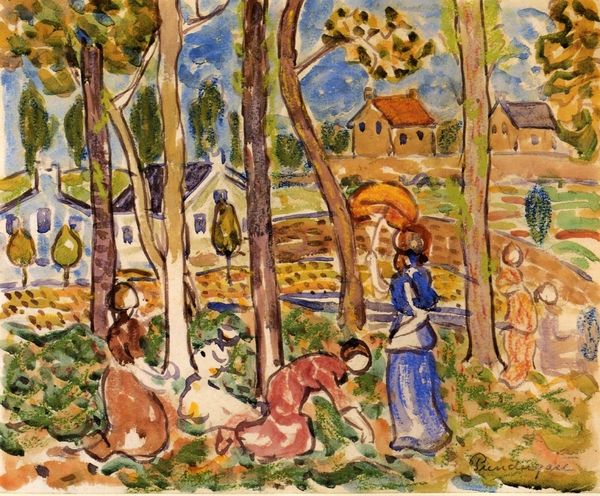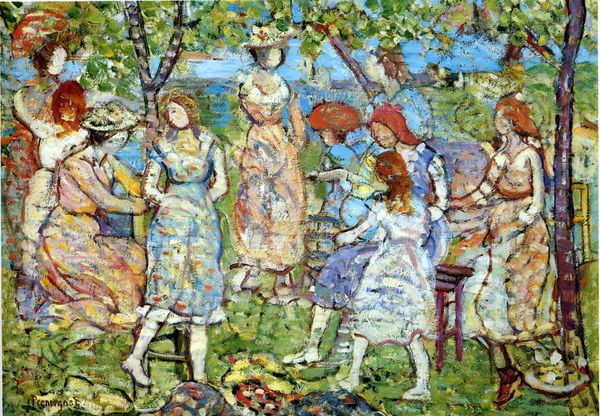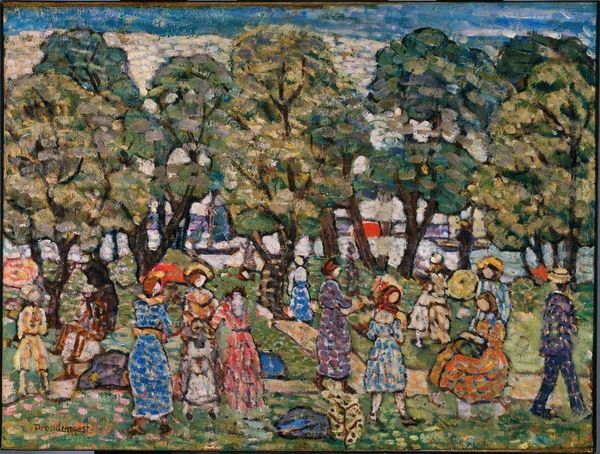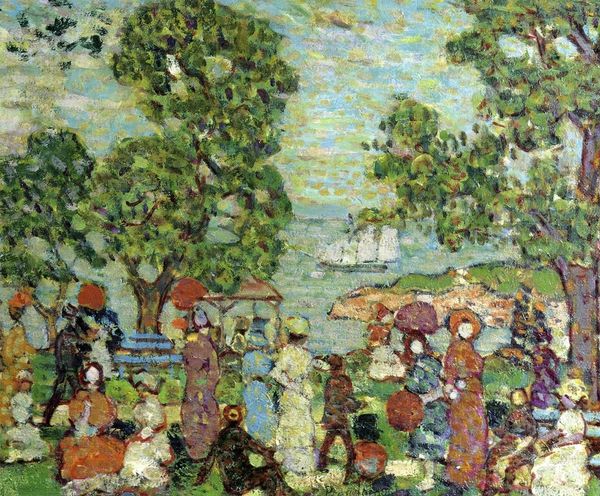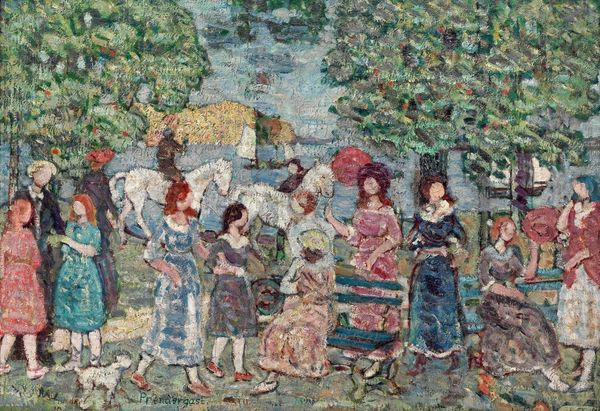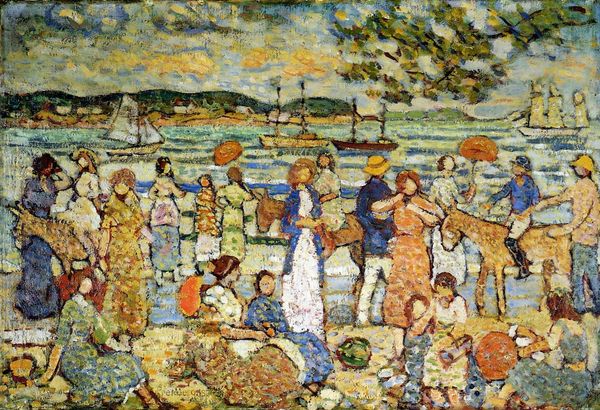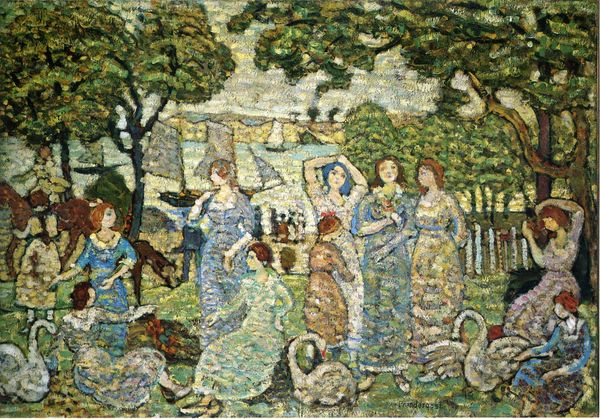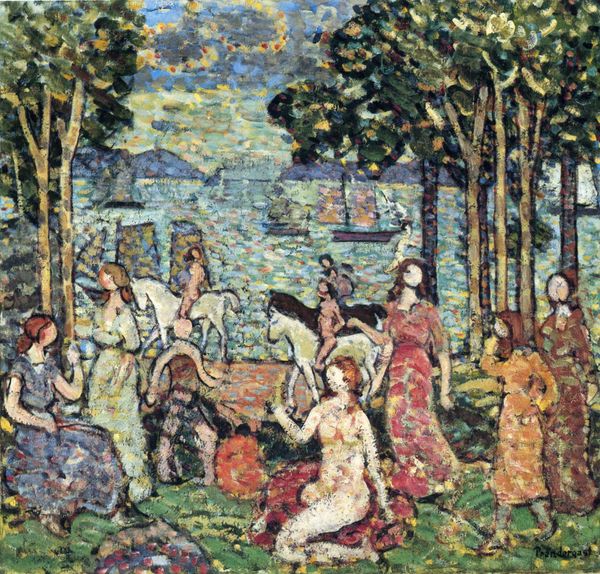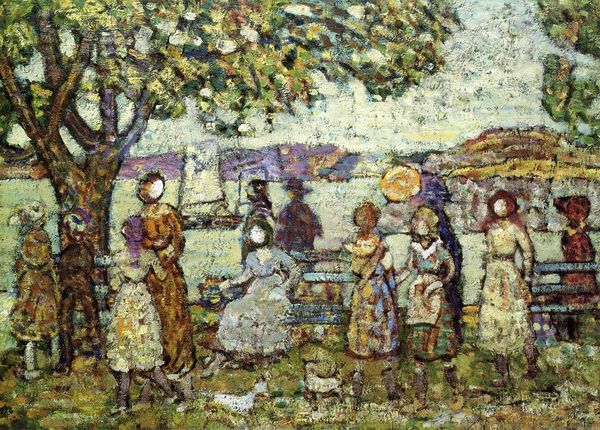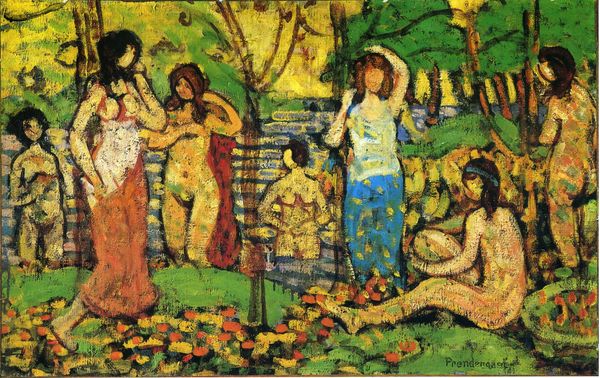
Dimensions: 93.98 x 144.78 cm
Copyright: Public domain
Curator: What immediately grabs me is Prendergast’s blatant manipulation of materials, the pure paint itself. Editor: We’re looking at Maurice Prendergast's "The Picnic," created around 1915. It's an oil painting, and it has this wonderfully bright, almost childlike quality. What do you see in this piece? Curator: The overt application, those deliberate daubs of color – it's almost confrontational. Forget any illusion of depth or perfect representation; the materiality of the paint is the subject. It throws into stark relief the artist’s labor and choices. Editor: I see what you mean. The dabs of color build the landscape. It’s definitely not trying to trick you into thinking it’s a photograph. So how does that focus on materiality relate to its context? Curator: Consider the shift occurring at the time: industrialization, mass production. An artwork like this pushes back. Prendergast emphasizes handcraft. The brushstrokes, the texture - each becomes a small act of resistance. Think of the Pre-Raphaelites a generation before him, or William Morris. Also notice how it challenges distinctions. "High Art" was historically seen as distinct from mere craft, But what are those women making on the lake bank? Perhaps some sort of basket, cloth, net, or garment? He's really blurred these distinctions here! What sort of world is displayed? Is that place a constructed reality? Is he representing the leisure and work of wealthy classes? Editor: So the medium *is* the message here, almost literally! By emphasizing the physicality of the paint, Prendergast comments on broader societal shifts. Curator: Precisely. We can almost feel the artist’s hand, pushing against the rising tide of mechanized culture. How does that understanding change your initial interpretation? Editor: It makes me see it less as simply a charming scene and more as a statement about art's role in a changing world. It definitely complicates things! Curator: That’s the point. The real work of art isn't just in the final image, but in the active manipulation of materials and the commentary that emerges.
Comments
No comments
Be the first to comment and join the conversation on the ultimate creative platform.

